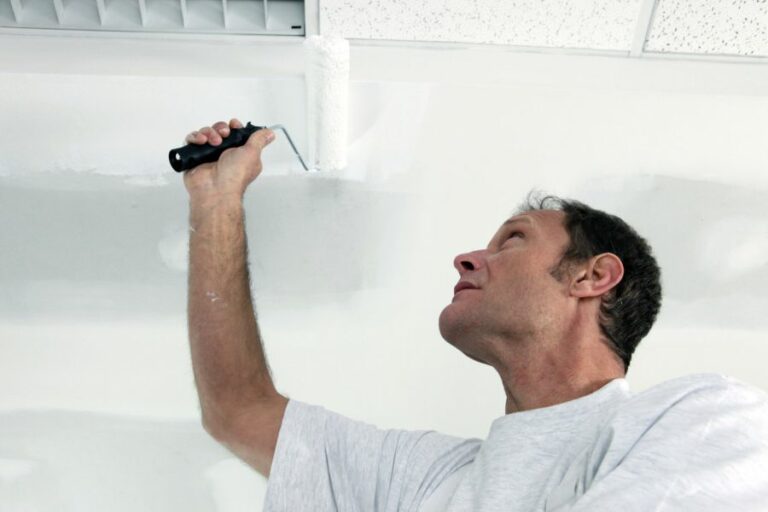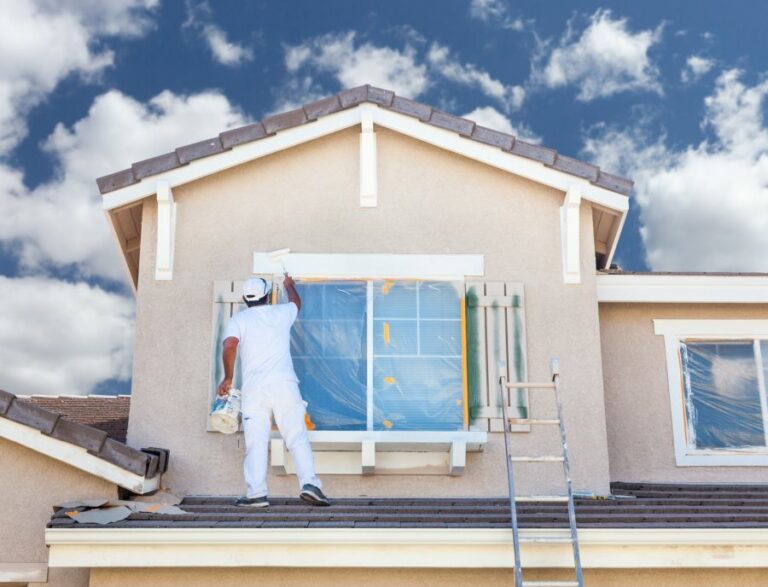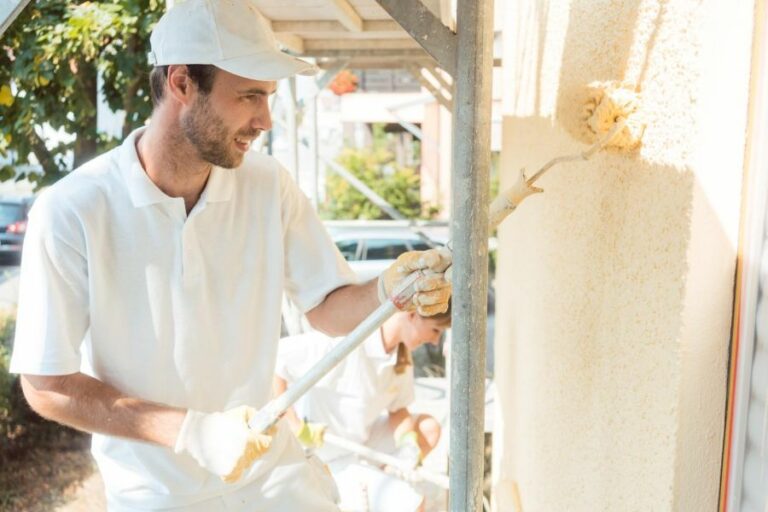Guide To Refinishing And Repainting Surfaces, What Pros Say
Is your living space in need of a fresh new look? Look no further; we have the perfect guide to refinishing and repainting surfaces. Our expert tips and guidance’ll help you transform outdated or worn-out wooden furniture, walls, or other surfaces into a beautiful and vibrant focal point within your home.
Guide to refinishing and repainting surfaces:
Refinishing and repainting surfaces involve proper preparation, selecting appropriate materials, and following correct techniques. Clean and assess the surface, protect surrounding areas, and choose high-quality paints, finishes, primers, brushes, and rollers. Sand before applying primer; use thin, even coats of paint and sand between coats for a smooth finish. Maintain the surface with regular cleaning and protection from sunlight, moisture, and damage.

Looking to give new life to your old surfaces? You’re not alone! Our comprehensive guide offers expert tips on refinishing and repainting surfaces, ensuring stunning results. Keep reading to master the techniques that’ll make your surfaces look brand new again!
Contents
- 1 Comprehensive Guide to Refinishing and Repainting Surfaces
- 2 Is Sanding Old Paint Necessary for Repainting Furniture?
- 3 How Much Sanding is Required Before Repainting?
- 4 Painting Over Surfaces Without Sanding: Is It Possible?
- 5 Importance of Priming Furniture Before Applying Paint
Comprehensive Guide to Refinishing and Repainting Surfaces
Whether it’s a piece of furniture, a wall, or an entire room, refinishing and repainting surfaces can breathe new life into old and worn-out items. This process can transform the overall appearance of these items, making them look fresh, clean, and well-maintained.
• Preparation Before Refinishing and Repainting
Before diving into the refinishing and repainting process, proper preparation is crucial. Skipping this step can lead to unsatisfactory results and wasted time and effort.
– Cleaning the Surface
First, clean the surface thoroughly to remove any dirt, grime, or dust. This can be done with a mild soap and water solution, followed by a thorough rinse with clean water. Allow the surface to dry completely before proceeding.
– Assessing the Surface
Next, assess the condition of the surface to determine if any repairs are needed. Look for dents, scratches, or other imperfections that may affect the final result. Repair any damage by sanding or filling in as needed.
– Protecting Surrounding Areas
Before starting any refinishing or repainting work, ensure that surrounding areas are protected from possible spills or drips. This can be done by using drop cloths or masking tape on adjacent surfaces.
• Choosing the Right Materials
Selecting the appropriate materials for the refinishing and repainting process is essential for a successful outcome.
– Paints and Finishes
Choose high-quality paint or finish suitable for the surface in question. Consider factors such as durability, washability, and resistance to fading when selecting the product.
– Primer
Using a primer helps create a bond between the surface and the new paint or finish. This step is essential for surfaces like metal, bare wood, or previously painted surfaces with a glossy finish. Choose a primer compatible with both the surface and the chosen paint or finish.
– Brushes and Rollers
Investing in high-quality brushes and rollers will help achieve a professional finish. Choose brushes with synthetic bristles for latex or water-based paints, while natural bristles are suitable for oil-based products. Similarly, choose a roller with the appropriate nap length, depending on the surface’s texture.
• Proper Refinishing and Repainting Techniques
Following the correct techniques for refinishing and repainting will ensure a smooth and even finish.
– Sanding
Before applying any paint or finish, lightly sand the surface to enhance adhesion. This step also helps remove any old paint, stains, or varnish. Use fine-grit sandpaper (180 to 220-grit) for this process. Always sand in the direction of the grain for wood surfaces.
– Applying Primer
Primer is applied using either a brush or roller, depending on the surface’s size and type. Ensure even coverage and smooth out any drips or runs. Allow the primer to dry completely, as per the manufacturer’s recommendations.
– Applying Paint or Finish
Apply the chosen paint or finish using a brush or roller, beginning with thin, even coats. Allow each coat to dry completely before applying the next one. This may require multiple coats for optimal coverage and appearance.
– Sanding Between Coats
For a super-smooth finish, lightly sand between coats using very fine-grit sandpaper (320 to 400-grit). Remove any dust or debris before applying the subsequent coat.
– Final Touches
After the final coat is dry, carefully remove any masking tape or protective materials. Inspect the surface for any touch-ups needed and address them as necessary.
• Proper Maintenance
Once the refinishing and repainting process is complete, proper maintenance is essential to keep the surface looking its best.
- Clean the surface regularly with a mild soap and water solution to prevent the build-up of dirt and grime.
- Protect the surface from direct sunlight, moisture, and temperature fluctuations.
- Avoid placing heavy or sharp items on the surface, which may cause scratches or dents.
In conclusion, refinishing and repainting surfaces can be a rewarding and cost-effective way to revitalize various items in a home or office.
By following the steps outlined in this guide and using high-quality materials, one can achieve professional results and extend the life of the surface in question.
Is Sanding Old Paint Necessary for Repainting Furniture?
• Importance of Surface Preparation
When it comes to the quality and longevity of a paint job, surface preparation is key. In fact, many professionals agree that proper surface preparation is the most important factor in determining the success of any painting project.
In this context, sanding off old paint is a crucial step in the surface preparation process, especially when repainting furniture.
• Reasons to Remove Old Paint
There are a number of reasons why sanding off old paint is crucial before applying a new coat:
1. Ensuring Proper Adhesion and Bonding
Paint adheres much better to a smooth, clean surface. By removing old paint, you provide the new paint with a suitable substrate to bond effectively, thereby reducing the chances of peeling and flaking.
2. Revealing Surface Defects
Sanding off the old paint helps to expose any underlying defects, such as cracks, dents, or other damages. Identifying these issues before painting allows you to address them first, ensuring a smoother, more even finish.
3. Promoting Uniform Appearance
When old paint is not removed, and new paint is applied over it, the new paint may have an uneven appearance, with the old paint layer being visible through the new coat. Removing the old paint ensures a consistent, uniform finished look.
– 4. Achieving Desired Finish
Certain types of finishes, such as high-gloss, semi-gloss, or satin, require a smooth substrate to achieve the desired look. Sanding off the old paint not only prepares the surface for proper adhesion but it also ensures the desired finish is achieved.
• Sanding Techniques
There are a few different techniques that can be employed to sand off old paint from furniture:
1. Manual Sanding
Manual sanding involves using a sanding block, sandpaper, or a sanding sponge to remove old paint. This method is ideal for smaller, more intricate pieces or for surfaces with smaller areas of peeling or chipping paint.
Start with coarse grit sandpaper (60 to 80 grit) to remove the bulk of the old paint, and then switch to finer grit sandpaper (120 to 220 grit) to smooth the surface.
2. Power Sanding
If you have a large piece of furniture or a piece with extensive areas of old paint, using an electric sander can be more efficient. Orbital sanders and palm sanders are examples of power sanders typically used for furniture projects.
Just like manual sanding, start with a coarse grit sandpaper and work your way to a finer grit for a smooth finish.
3. Liquid Paint Removers
In certain cases, it may be beneficial to use a liquid paint remover in conjunction with sanding. These chemical solutions soften the old paint, making it easier to remove with sandpaper or a scraper.
Keep in mind that liquid paint removers can be harsh and may damage the furniture if not used properly, so follow the manufacturer’s instructions carefully.
• Safety Precautions
When sanding old paint, it’s important to take certain safety precautions:
- Wear protective gear, such as gloves, a dust mask, and safety glasses, to protect yourself from paint dust and particles.
- Work in a well-ventilated area to minimize exposure to airborne particles.
- If the paint being removed is lead-based, consult EPA guidelines for proper handling and removal.
• In Conclusion
So, do you have to sand off old paint before repainting furniture? The answer is yes, as it is a crucial step in a surface preparation that ensures proper adhesion, bonding, and overall quality of the new paint job.
By employing the appropriate sanding techniques and taking necessary safety precautions, you can achieve a professional, long-lasting finish on your furniture piece.
| Is Sanding Old Paint Necessary for Repainting Furniture? |
|---|
| Yes, it is recommended to sand off the old paint before repainting furniture to ensure a smooth and even surface. |
How Much Sanding is Required Before Repainting?
Sanding is a critical step in the painting process. It ensures optimum adhesion of the new paint while providing a smooth surface for the paint to glide on.
• Understanding the Sanding Process
Sanding is the process of using abrasive materials like grit sandpaper to smoothen a rough surface. When preparing a surface for repainting, sanding helps remove the old layers of paint and creates a more even surface for the new paint to adhere to.
The correct sanding methods depend on the type of surface being painted – wood, metal, or drywall.
– Sanding Wood Surfaces
Wood surfaces, like furniture or doors, require careful sanding to prevent damage. When sanding wood, it’s essential to use the right grit of sandpaper; start with coarser grits like 80- or 100-grit sandpaper and gradually work your way to finer grits like 180- or 220-grit.
Before starting the sanding process, ensure that the surface is clean and free from any dirt or dust. Begin sanding with light pressure, moving in the direction of the wood grain. As you progress, switch to finer grit sandpaper, ensuring a smoother finish.
Sand the surface evenly and inspect for any uneven areas or deep scratches. To avoid patches or uneven sanding, use a sanding block or power sander for more precise results.
– Sanding Metal Surfaces
For metal surfaces, like handrails or frames, sanding serves a dual purpose: removing old paint and preventing rust. Begin by removing any existing rust or chipped paint using a wire brush or coarse sandpaper. Next, apply a rust converter to protect the metal from future rusting.
Since metal surfaces are more resilient than wood, you can use a more aggressive sanding technique. Begin with a 60- or 80-grit sandpaper and sand the surface evenly. As you remove the old paint, switch to 180- or 220-grit sandpaper for a smoother finish.
– Sanding Drywall Surfaces
Sanding drywall is essential when prepping for a new paint job. Drywall sanding can be a messy process, so be sure to wear a dust mask and protective eyewear.
First, remove any loose or peeled paint using a scraper. Next, sand the surface using a 100-grit sanding sponge or pole sander to remove any remaining paint or imperfections. Afterward, use a damp cloth to remove any dust from the surface.
• Factors Influencing How Much to Sand
There is no one-size-fits-all answer to how much you should sand before repainting. Several factors come into play, including the condition of the existing surface and the type of paint being applied.
– Condition of the Surface
A surface that has multiple layers of old paint, cracks, or peels will require more aggressive sanding to prepare for a new paint job. On the contrary, if the surface is in good condition and has minimal imperfections, you can opt for light sanding.
– Type of Paint Being Applied
Some paint types require a smoother surface to ensure proper adhesion. For example, high-gloss paints highlight any imperfections on the surface, so it’s crucial to sand the surface more diligently. On the other hand, flat or matte paints can hide minor imperfections, thereby requiring less intensive sanding.
• The Importance of Priming After Sanding
After sanding your surface, it’s essential to apply an appropriate primer before painting. Priming serves as an intermediate layer between the sanded surface and new paint, ensuring proper adhesion and a consistent finish.
Choose a primer that is appropriate for your surface wood, metal, or drywall. In addition to providing a better painting surface, primers can also offer protection against mold, mildew, or rust.
• In Conclusion
The process of sanding greatly influences the quality and longevity of your paint job. Always assess the condition of the surface you’re working with and choose the appropriate sandpaper grit and sanding techniques.
Remember to clean the surface and apply a suitable primer after sanding to ensure the best possible results.
Step | Description |
|---|---|
1 | Inspect the current paint condition. |
2 | Remove any loose or peeling paint with a paint scraper or wire brush. |
3 | Lightly sand the surface with 180-220 grit sandpaper to create a smooth surface. |
4 | If there are any visible imperfections, use coarser grit sandpaper (80-120 grit) to sand them down. |
5 | Finish by sanding the entire surface again with fine grit sandpaper (320-400 grit) for a smooth finish. |
6 | Clean the surface with a damp cloth to remove any dust or debris before painting. |
Painting Over Surfaces Without Sanding: Is It Possible?
Painting over a surface without sanding is a common question and concern for many DIY enthusiasts and even professionals. Understanding the importance of surface preparation and the role of sanding in achieving a smooth and lasting finish is crucial.
• When Is It Possible to Paint Without Sanding?
There are certain situations where it is possible to paint over a surface without sanding, but specific conditions must be met. These conditions include:
– Clean Surfaces
For the new paint to adhere properly, the surface must be clean and free from oil, grease, dirt, and other contaminants. You can use a commercial cleaner or a homemade solution consisting of warm water and mild dish soap to clean the area thoroughly.
Rinse the surface with clean water and allow it to dry completely before applying the paint.
– Lightly Textured Surfaces
Smooth surfaces often require sanding to create a slightly rough texture, providing a better grip for the paint. However, if the surface is already lightly textured, such as eggshell or satin paint finishes, you may be able to skip the sanding step.
– Using the Right Paint
Some paints and primers are specifically designed to bond well to previously painted surfaces without sanding. These include:
- Latex paints: These water-based paints work well over existing paint and are suitable for most surfaces, including wood, metal, and plastic. They offer numerous options in terms of color and finish, making them a versatile choice.
- Bonding primers: These primers are specifically designed to adhere to glossy and hard-to-paint surfaces without the need for sanding. Many experts recommend a bonding primer as the ideal solution when painting over difficult surfaces like ceramic tile or high-gloss paint.
• The Advantages of Painting Without Sanding
Skipping the sanding step offers several advantages, such as:
– Saving Time and Effort
Sanding can be a time-consuming and labor-intensive task, especially when working on large surfaces like walls or floors. By avoiding sanding, you can complete your painting project much faster and with less effort.
– Reducing Dust and Mess
Sanding generates a large amount of fine dust, which can be difficult to clean up and cause respiratory issues if not handled properly. Painting without sanding eliminates this problem, resulting in a cleaner and healthier work environment.
– Preserving Surface Details
In some cases, the intricate details or patterns on surfaces can be lost or damaged by sanding. Painting without sanding helps to maintain these unique features.
• The Disadvantages of Painting Without Sanding
Despite its apparent benefits, there are some drawbacks to consider when deciding to paint without sanding:
– Poor Adhesion
If the surface is not prepared correctly or the right paint is not used, the new paint might not adhere well to the surface. This could result in peeling or blistering paint over time.
– Uneven Finish
Without sanding to create a uniform surface, the paint might not spread evenly, leading to an inconsistent finish with a visible brush or roller marks.
– Shorter Lifespan
Paint applied directly over a non-sanded surface might not have the same durability as paint applied over a properly prepared surface. This could result in a shorter lifespan for the new paint job and more frequent touch-ups or repainting.
• Recommendations for a Successful Paint Job Without Sanding
Based on my personal experience, the following recommendations can help you achieve the best results when painting without sanding:
- Always clean the surface thoroughly before painting.
- Test the paint compatibility and adhesion before applying to the entire surface.
- Choose the right paint or primer specifically designed for painting without sanding.
- Apply multiple thin coats of paint, allowing adequate dry time between coats.
- Use a high-quality brush or roller to ensure a smooth and even finish.
In conclusion, it is possible to paint over certain surfaces without sanding, provided specific conditions are met, and the right paint is used. However, bear in mind that skipping the sanding step could compromise the quality and longevity of the new paint job.
If in doubt, consult a professional painter or paint store expert for guidance on your specific project.
Surface | Can you paint without sanding? | Notes |
|---|---|---|
Wood | Not recommended | Sanding helps in creating a better bond between the paint and the surface. |
Metal | Not recommended | Sanding helps in removing rust and preparing the surface for better paint adhesion. |
Plastic | Possibly | Use a paint specifically designed for plastic. Light scuffing may still be beneficial for better adhesion. |
Laminate | Not recommended | Sanding or a deglosser is required to create a suitable surface for paint adhesion. |
Drywall | Yes | Ensure the surface is clean and dust-free. A primer may be necessary for better paint adhesion. |
Importance of Priming Furniture Before Applying Paint
When it comes to painting furniture, one important question that often arises is whether or not to use a primer.
Primer acts as a preparatory coat and helps the paint adhere to the surface better, resulting in a smoother, more long-lasting finish. In some cases, using a primer can be essential, while in others, you can bypass it.
• The Importance of Priming
There are several reasons why priming furniture before painting is beneficial:
– Improved Adhesion
Applying a primer before painting can significantly improve paint adhesion, especially on surfaces such as laminates, plastics, or lacquered surfaces where paint doesn’t tend to stick well.
– Durability
Primer increases the durability of the paint by creating a robust bond between the paint and the surface, allowing the paint to withstand normal wear and tear.
– Color Consistency
A primer helps create an even base and prevents uneven textures or colors from showing through the paint, allowing for a uniform finish across the furniture.
– Covering Stains and Odors
Some primers have stain-blocking properties, effectively sealing in stains and odors to ensure they don’t bleed through the paint.
• When You Should Definitely Use a Primer
– Painting over Stains or Dyes
If the furniture has any stains, dyes, or noticeable blemishes, using a stain-blocking primer can prevent them from seeping through the paint.
– Painting Over Dark or Bright Colors
To transition from a dark or bright color to a lighter one or achieve a significant color change, priming the surface can reduce the number of paint coats needed to cover the previous color.
– Bare Wood or MDF (Medium Density Fiberboard)
When dealing with unfinished wood or MDF, a primer will help seal the surface, improving adhesion and preventing paint from soaking into the wood.
– Highly-Varnished or Lacquered Surface
Highly-varnished or lacquered surfaces are notoriously difficult to paint without the right preparation. Sanding and applying primer can help paint adhere better to these sleek surfaces.
– Glossy or Hard to Paint Surfaces/laminates/plastics
In these cases, using an adhesion-promoting primer can be essential for the paint to stick well to the surface and prevent chipping or peeling.
• When You Can Skip Priming
– Repainting with a Similar or Darker Color
If your furniture is already painted with non-glossy paint and you plan to repaint in a similar or darker color, priming may not be necessary.
– Paint and Primer in One
Some paints have a built-in primer, allowing you to skip applying a separate primer before painting. However, if you’re dealing with a more challenging surface (e.g., glossy laminate), it’s always safe to use a dedicated primer.
– Chalk Paint or Milk Paint
Chalk or milk paint can often be applied directly to the furniture without the need for a primer, as they tend to adhere well to most surfaces.
These paints can be sanded or distressed for a vintage appeal, but if you’re looking for a smooth, modern finish, it’s recommended to use a primer for better adhesion and to prevent any original paint or wood color from showing through.
• Preparing the Surface
Before applying primer or paint, it’s essential to properly prepare the surface of the furniture:
- Clean the surface with a mild soap and water solution, ensuring to remove any dirt, grease, or grime.
- Allow the surface to dry thoroughly.
- Lightly sand the surface using fine-grit sandpaper (e.g., 220-grit). This helps create a smooth and even surface for the primer and paint to adhere to better.
- Wipe off any sanding dust with a tack cloth or damp rag.
• Selecting the Right Primer
There are several types of primers available, depending on the furniture’s surface and your specific requirements:
- Water-based primers are suitable for most surfaces and clean up easily with water. They are generally low-odor and dry quickly.
- Oil-based primers are best for stained or bare wood surfaces, provide excellent coverage, and have stain-blocking properties. However, they are high-odor and require a paint thinner or mineral spirits for cleanup.
- Shellac-based primers are very effective for stain-blocking and sealing odors. They dry quickly but are high-odor and also require mineral spirits for cleanup.
I recommend consulting with a professional at your local paint store or home improvement center to help you select the appropriate primer for your project.
• Conclusion
The decision of whether or not to prime furniture before painting depends on various factors, including the type of surface, desired color change, and paint. Skipping primer may be possible in some cases, such as repainting with a similar or darker color or using chalk paint.
However, priming furniture offers several benefits, such as improved adhesion, durability, and color consistency. Preparation is key; always clean, lightly sand, and remove any dust before applying primer or paint.







